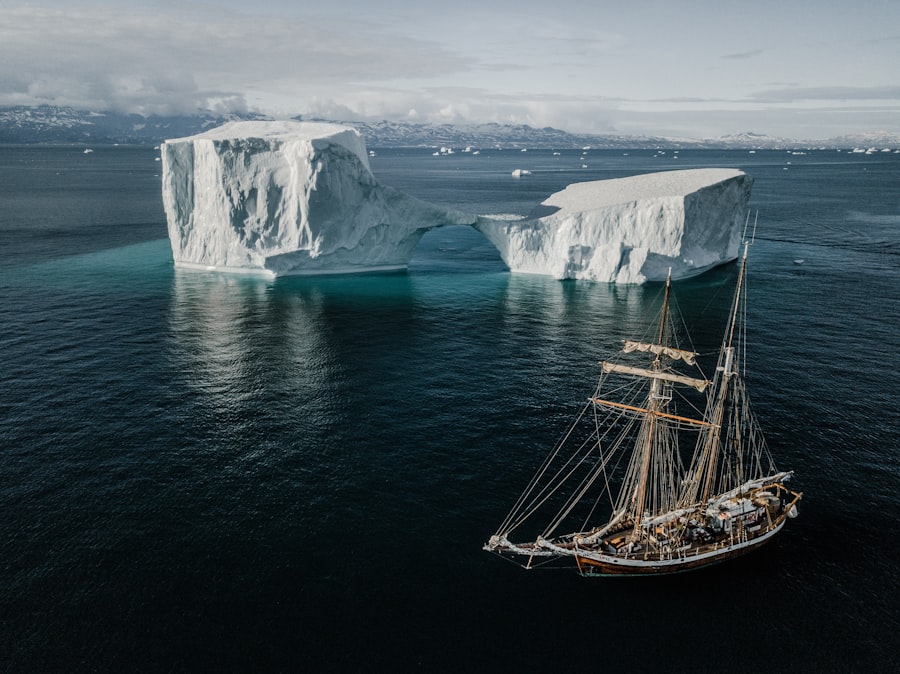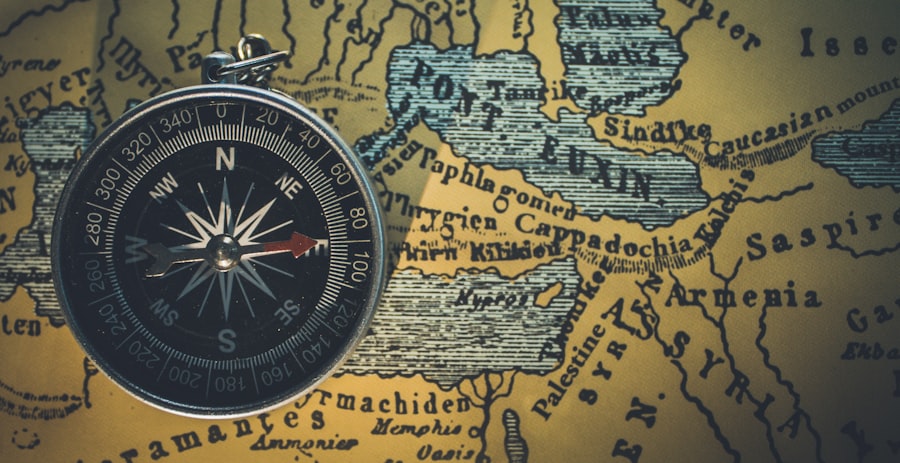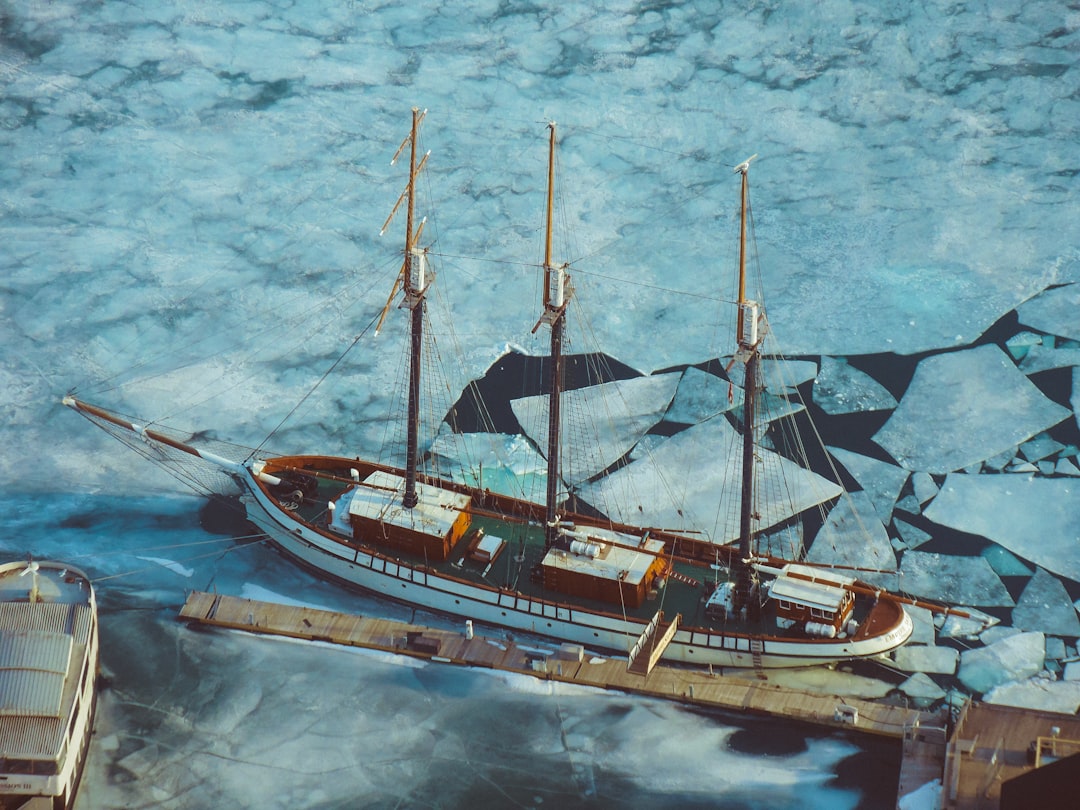The Drake Passage, a body of water that separates South America from Antarctica, is renowned for its treacherous conditions and unpredictable nature. Stretching approximately 800 kilometers (500 miles) from Cape Horn to the Antarctic Peninsula, it is often regarded as one of the most challenging maritime routes in the world. Sailors and adventurers alike have long been captivated by its formidable reputation, which stems from the confluence of powerful ocean currents and the relentless winds that sweep across the Southern Ocean.
The passage is not merely a geographical feature; it represents a formidable barrier that has tested the mettle of countless seafarers throughout history. Navigating the Drake Passage requires not only skill but also a deep respect for the sea. The waters are notorious for their roughness, with waves that can reach heights of over 10 meters (33 feet) during storms.
This unpredictability has led to numerous shipwrecks and near-misses, making it a rite of passage for those who dare to traverse its depths.
For many, crossing this iconic stretch of water is a testament to human resilience and a celebration of the spirit of adventure.
Key Takeaways
- The Drake Passage is a challenging crossing due to its rough seas and strong winds, making it one of the most notorious waterways in the world.
- The unpredictable weather of the Drake Passage can change rapidly, with conditions ranging from calm to extreme storms, posing a challenge for sailors and researchers alike.
- The wildlife of the Drake Passage is diverse and abundant, with sightings of whales, seals, and various seabirds, making it a popular destination for wildlife enthusiasts.
- The history of the Drake Passage is rich with exploration and discovery, with famous expeditions by explorers such as Sir Francis Drake and Charles Darwin.
- The importance of the Drake Passage for scientific research cannot be overstated, as it serves as a crucial gateway for studying ocean currents, marine life, and climate patterns.
The Unpredictable Weather of the Drake Passage
The weather in the Drake Passage is notoriously capricious, characterized by rapid changes that can occur within minutes. This unpredictability is primarily due to the convergence of cold polar air from Antarctica and warmer air from the north, creating a volatile atmosphere that can lead to sudden storms. Sailors often find themselves caught off guard by fierce winds and torrential rain, which can transform a calm sea into a tumultuous expanse in no time.
The passage’s reputation for inclement weather has earned it the nickname “Drake Shake,” a term that aptly describes the violent rocking and rolling experienced by vessels navigating its waters. The impact of this unpredictable weather extends beyond mere discomfort; it poses significant challenges for navigation and safety. Mariners must remain vigilant and adaptable, constantly monitoring weather patterns and adjusting their routes accordingly.
The ability to read the signs of impending storms and respond swiftly can mean the difference between a safe passage and a perilous situation. For those who venture into the Drake Passage, understanding its weather dynamics is crucial, as it shapes not only their journey but also their overall experience in this wild and untamed region.
The Wildlife of the Drake Passage

Despite its challenging conditions, the Drake Passage is home to an astonishing array of wildlife, making it a vital ecosystem in the Southern Ocean. The nutrient-rich waters support a diverse range of marine life, including krill, which serves as a crucial food source for many species. This abundance attracts various seabirds, such as albatrosses and petrels, which glide gracefully above the waves in search of sustenance.
The sight of these magnificent birds soaring overhead is a reminder of the delicate balance that exists within this marine environment. In addition to seabirds, the waters of the Drake Passage are frequented by marine mammals, including whales and seals. Species such as humpback whales, orcas, and southern right whales can often be spotted during their migratory journeys through the passage.
The presence of these majestic creatures adds an element of wonder to any crossing, as travelers are treated to breathtaking displays of nature’s beauty. Observing wildlife in its natural habitat is one of the most rewarding aspects of navigating the Drake Passage, offering a glimpse into the intricate web of life that thrives in this remote corner of the world.
The History of the Drake Passage
| Year | Event |
|---|---|
| 1616 | Discovery of the Drake Passage by Sir Francis Drake |
| 1839 | First recorded crossing of the Drake Passage by a ship |
| 1940 | First air reconnaissance of the Drake Passage |
| 1970 | First successful solo crossing of the Drake Passage by sea kayak |
| 2014 | First successful attempt to swim across the Drake Passage |
The history of the Drake Passage is steeped in exploration and adventure, with early navigators facing immense challenges as they sought to chart its waters. The passage was named after Sir Francis Drake, an English explorer who became one of the first Europeans to navigate these treacherous seas in the late 16th century. His journey marked a significant milestone in maritime history, as it opened up new routes for trade and exploration.
However, it also highlighted the dangers inherent in traversing this formidable stretch of ocean. Over the centuries, many explorers have followed in Drake’s footsteps, each contributing to our understanding of this remote region. The passage has served as a gateway for scientific expeditions, whaling ventures, and even military operations.
Each chapter in its history reflects humanity’s enduring quest for knowledge and adventure, as well as the inherent risks associated with venturing into uncharted waters. Today, the Drake Passage stands as a testament to human ingenuity and resilience, reminding us of our capacity to explore even the most challenging environments.
The Importance of the Drake Passage for Scientific Research
The Drake Passage plays a crucial role in scientific research, particularly in studies related to climate change and oceanography. Its unique position at the confluence of various ocean currents makes it an ideal location for monitoring environmental changes and understanding their global implications. Researchers have long recognized that the passage serves as a natural laboratory for studying marine ecosystems and their responses to shifting climatic conditions.
One significant area of research focuses on the impact of melting ice from Antarctica on ocean currents and sea levels. As climate change accelerates glacial melting, scientists are keenly interested in how these changes affect marine life and global weather patterns. The Drake Passage provides valuable data that can inform predictions about future climate scenarios and help policymakers make informed decisions regarding environmental conservation.
By studying this vital waterway, researchers contribute to our understanding of complex ecological interactions and their far-reaching consequences.
The Geological Significance of the Drake Passage

Geologically speaking, the Drake Passage is a fascinating area that offers insights into Earth’s tectonic history. The passage lies at a critical juncture where several tectonic plates converge, leading to unique geological formations and processes. This region has been shaped by millions of years of tectonic activity, resulting in features such as underwater ridges and deep-sea trenches that provide valuable information about Earth’s geological evolution.
The geological significance of the Drake Passage extends beyond its physical features; it also plays a role in understanding past climate changes. Sediment cores extracted from the ocean floor reveal clues about historical climate patterns and shifts in biodiversity over time. By studying these geological records, scientists can piece together a more comprehensive picture of how Earth’s climate has evolved and how it may continue to change in response to natural and anthropogenic influences.
The Experience of Crossing the Drake Passage
For many adventurers and travelers, crossing the Drake Passage is an unforgettable experience that combines excitement with trepidation. As vessels set sail from Ushuaia, Argentina, passengers often feel a mix of anticipation and anxiety about what lies ahead. The journey typically takes around two days, during which travelers are treated to stunning views of rugged coastlines and expansive ocean vistas.
However, they must also brace themselves for potential rough seas that can lead to moments of discomfort. The experience is not solely about navigating turbulent waters; it is also an opportunity for connection with fellow travelers who share a passion for exploration. Onboard lectures about wildlife, geology, and history enrich the journey, fostering a sense of camaraderie among passengers.
As they traverse this iconic passage, travelers often find themselves reflecting on their place within nature’s vast tapestry—a humbling reminder of both human vulnerability and resilience in the face of nature’s grandeur.
The Best Time to Navigate the Drake Passage
Timing is crucial when planning a crossing of the Drake Passage, as seasonal variations can significantly impact conditions at sea. Generally speaking, the austral summer months from November to March are considered the best time for navigation. During this period, weather patterns tend to be more stable, with calmer seas and milder temperatures that make for a more pleasant crossing experience.
However, even during peak season, travelers should remain prepared for sudden changes in weather conditions. While summer may offer more favorable sailing conditions compared to winter months when storms are more frequent and severe, unpredictability remains a hallmark of the Drake Passage. Those who embark on this journey during peak season often find themselves rewarded with opportunities to witness wildlife activity at its height—an added bonus that enhances their overall experience.
The Role of the Drake Passage in Global Climate
The Drake Passage plays an integral role in regulating global climate patterns due to its unique position within oceanic circulation systems. As cold Antarctic waters flow northward through the passage, they interact with warmer currents from other regions, creating complex exchanges that influence temperature and weather patterns across vast distances. This dynamic interplay contributes to phenomena such as El Niño and La Niña events—climatic oscillations that have far-reaching effects on global weather systems.
Moreover, scientists recognize that changes occurring within the Drake Passage can serve as early indicators of broader climatic shifts. Monitoring ocean temperatures, salinity levels, and currents within this region provides valuable insights into how climate change is impacting marine ecosystems and atmospheric conditions worldwide. As researchers continue to study these interactions, they gain critical knowledge that informs our understanding of climate dynamics and helps predict future trends.
The Navigation Routes of the Drake Passage
Navigating through the Drake Passage involves careful planning and consideration of various routes based on prevailing weather conditions and vessel capabilities. While there are established shipping lanes used by commercial vessels traversing between South America and Antarctica, smaller expedition ships often take alternative paths to enhance wildlife viewing opportunities or avoid particularly rough sections. Mariners must remain vigilant while navigating these waters due to potential hazards such as icebergs or shifting currents that can pose risks even for experienced sailors.
Advanced technology has improved navigation safety over recent years; however, traditional seamanship skills remain essential when traversing this challenging passage. Ultimately, successful navigation through the Drake Passage requires not only knowledge but also adaptability—a testament to humanity’s enduring spirit of exploration.
The Future of Navigating the Drake Passage
As interest in polar exploration continues to grow among tourists and researchers alike, discussions surrounding sustainable navigation practices within the Drake Passage have become increasingly important. Balancing human activity with environmental conservation poses significant challenges; however, advancements in technology offer promising solutions for minimizing ecological impacts while ensuring safe passage through these waters. Future navigation efforts may focus on implementing stricter regulations regarding vessel emissions or developing eco-friendly technologies that reduce carbon footprints during crossings.
Additionally, ongoing research into marine ecosystems will inform best practices for preserving biodiversity while accommodating increased maritime traffic in this fragile region. In conclusion, navigating through the Drake Passage remains an awe-inspiring endeavor filled with challenges and rewards alike—an experience that encapsulates both humanity’s quest for adventure and our responsibility toward protecting nature’s wonders for generations to come.
If you’re fascinated by the Drake Passage and its intriguing facts, you might also enjoy exploring more about the world’s geographical wonders. A related article that delves into various geographical phenomena can be found on MyGeoQuest. This resource offers a wealth of information about different geographical locations and their unique characteristics. For more insights, check out this related article on MyGeoQuest, which provides an engaging exploration of geographical wonders similar to the Drake Passage.
WATCH NOW! Drake Passage: Earth’s Deadliest Waters Revealed
FAQs
What is the Drake Passage?
The Drake Passage is the body of water between the southern tip of South America and the northern tip of the Antarctic Peninsula. It connects the Atlantic and Pacific Oceans.
Why is the Drake Passage significant?
The Drake Passage is known for its rough seas and strong winds, making it one of the most challenging and unpredictable bodies of water to navigate. It is also a critical route for ocean currents and marine life, serving as a natural barrier between the Atlantic and Pacific Oceans.
What are some fun facts about the Drake Passage?
– The Drake Passage is named after the English explorer Sir Francis Drake, who is believed to be the first European to sail through the area in 1578.
– The passage is approximately 500 miles wide and 600 miles long, with depths reaching up to 4,000 meters.
– The waters of the Drake Passage are home to a diverse range of marine life, including whales, seals, and seabirds.
– The passage is a popular destination for adventure seekers and wildlife enthusiasts, offering opportunities for whale watching and bird watching.
– The extreme weather conditions and strong currents in the Drake Passage have earned it the nickname “the roughest sea in the world.”
